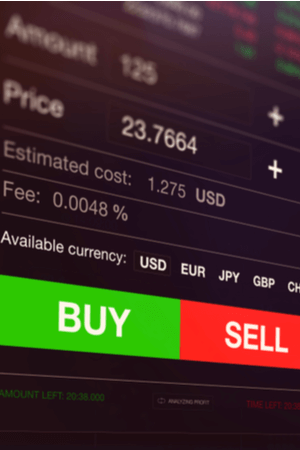Different types of futures
A future is an investment form with a contract whose term and contract size are standardized in advance, which makes trading on exchanges possible. The costs that you have to pay to purchase a future differ and can be purchased from many brokers.
When you buy a future, you enter into a purchase obligation in the future and the seller of this future has a delivery obligation. So it is essentially a kind of agreement between a seller and the seller when you would like to buy something now for a certain value, and want to guarantee this price for the future. That all sounds very easy, you might think, and to a certain extent it is very easy, but in practice it obviously entails some risks .
In addition, there are various futures that you can buy, namely a future long or a future short.
Long of short futures
There are two different futures, namely the future long or future short, which differ in the expected increases or decreases and the expected underlying value.
For a future long you choose when you assume that the underlying value (such as the currency or a certain commodity) will rise. When you hope and assume that this underlying value will actually fall, then you choose a future short. How much you ultimately earn with it of course depends on what the future price is and has nothing to do with the type of long or short.
To get an idea of the expected returns, consider the following example: Suppose you have chosen a long future and you expect an increase in the underlying value, the contract value is €200 per point and the future you buy from the AEX has 550 points. If the indicator rises to 560 points and you then sell it again, you will gain 5 points with this increase. 5 times €200 quickly means a return of no less than €1,000.
If you then buy a future short of the AEX of 560 points, and the index rises by 10 points, you will make a loss. With a future short, you are gambling that the AEX will fall. Ten points times €200 means a loss of no less than €2,000. In short, it is possible to quickly achieve a high return thanks to a guarantee, but it is also risky and can lead to large losses. Due to the high risk of futures, it is not advisable for novice investors to start with this.

The deposit
When you start futures you have to deal with big obligations. Often you don’t want to just pay €110,000, while the seller of course wants the certainty that you can meet the obligation.
This is covered by a deposit (a margin) that you pay to the seller and serves as additional security. The amount of the deposit naturally differs per future, but on the AEX, between €5,000 and €7,000 is often paid as a deposit for a future. Taking a futures position does not cost any money.
Standards
Futures have standardized contract specifications. For example, a potato future of a specific brand and specific minimum diameter has an underlying value of, for example, 25,000 kilos. The future can also relate to, for example, 5,000 bushels of grain of a specific type or to, for example, 1,000 barrels of oil of a specific type. An AEX index future will represent this approximately 200 times. Here, the AEX future often deviates from options , since options usually double the index a hundred times.
Open buy/sell en close buy/sell
As with options, opening and closing transactions can be attributed to a future. For example, you can buy an opening buy, also called an ‘open buy’, or a ‘close buy’ future.
With an open buy, you buy a future with which you take a long position and profit from a rising price. An ‘open sell’ means that you open a position with a sold future. This creates a short position, allowing you to profit from a price drop. An open sell is also chosen to (temporarily) protect a share portfolio, for example when the price falls. You do not have to sell the portfolio for this, which often results in higher transaction costs. With closing transactions, positions with futures and short positions are closed again. With a ‘close buy’, existing short positions are closed and with a ‘close sell’, long positions are closed.

Huge leverage
Please note that you should not underestimate the risks of futures. With futures, you will be dealing with a considerable leverage. For example, if the AEX falls by €4, the futures price will also fall by €4. This means that if you own this future, two hundred times €4, namely €800, will be withdrawn from your account, which the seller will receive. This will then repeat itself every day, until the end of the agreed term.
This can be quite a high amount that many entrepreneurs cannot afford. The bank is therefore often forced to demand that the buyer deposits an amount in order to meet the obligations. This amount can then be blocked and is also called the ‘initial margin’. For an AEX future, banks often ask for around 10 percent of the underlying value.
With an initial margin of 10 percent, there is considerable leverage. For example, an investor can easily be in the market for €70,000, while he only invested €7,000.
If the market then falls by 5 percent, the loss will already amount to 50 percent of the investment, and if the market falls by 10 percent, you can even count on a debt. In most cases, the bank will try to prevent this, for example by demanding that the buyer regularly deposit a certain amount into the margin account, or by having your futures position closed again. The leverage effect can therefore backfire quite hard.
Compare brokers and start investing in futures
Are you excited about investing in futures after reading this article? Compare futures providers and find the broker that suits you best!